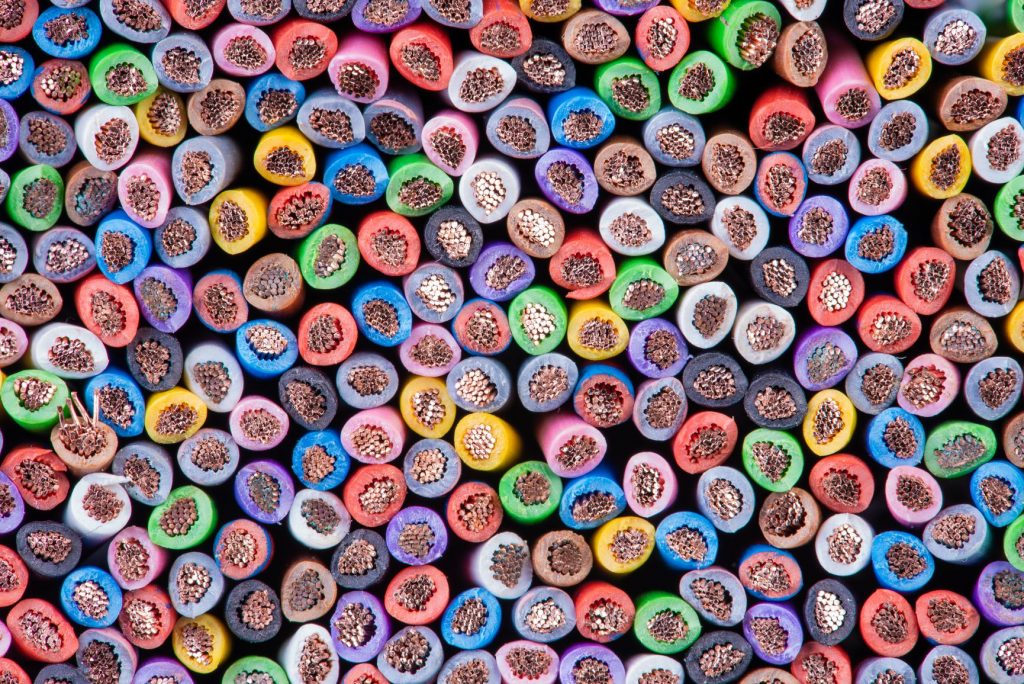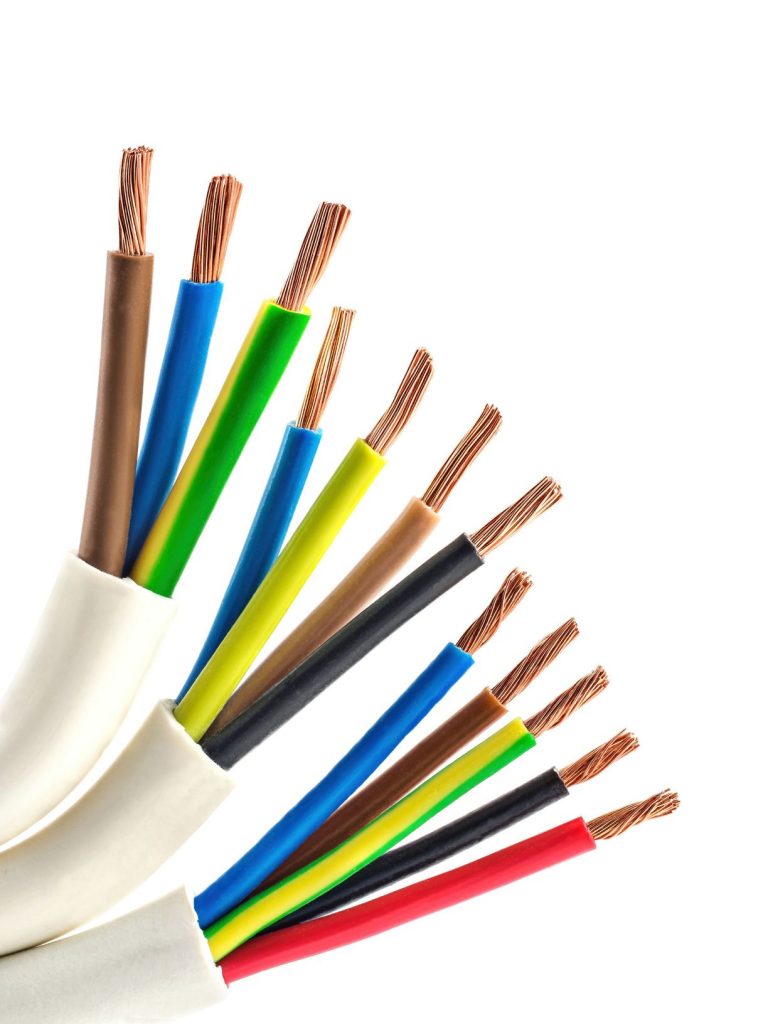Why are Cables Different Colors?
 The market is full of different types of cables with different colored outer jackets and individual core insulation. "A colorful bouquet full of security," so to speak.
The market is full of different types of cables with different colored outer jackets and individual core insulation. "A colorful bouquet full of security," so to speak.
There are guidelines for these colors called color codes. But why do cables have to be different colors?
The Color of the Outer Jacket
There is also a multitude of colors for our cables . The outer coats are black, blue, green, orange or gray, for example. At igus®, we orient our coloring to international standards. One of these is the DESINA standard , which specifies the color of the outer jacket.
DESINA - The Standard for Mechanical Engineering
DESINA was brought into being by a consortium of well-known machine tool manufacturers. This standard stands for DistributEd and Standardized INstAllation technology for machine tools and production systems. It describes the standardization of the installation and makes work easier for the fitter.
This means the following for igus® chainflex® cables:
- If a cable is manufactured according to the DESINA standard, the outer sheath must have a certain color depending on the type of cable.
- The outer jacket must be resistant to the coolants and lubricants used in industry
- The structure of the cable must be designed for use on machines in harsh environments
All our cables with DESINA standard are marked in the igus® chainflex® catalog with this symbol:

The Color of Core Insulation
The color of the cores of a cable can only be freely selected to a limited extent. There are corresponding specifications for color coding and DIN standards that must be observed. The respective colors also provide information about the functions of the wires.

CF240.PUR.02.08 data line
The protective conductor (PE), for example, is always green-yellow. There is no exception to this color coding.
Anyone who has ever connected a lamp themselves knows that colored markings (e.g. black, brown, red or blue) are used for wiring in buildings. This is predetermined, simplifies installation and ensures more security.

Cables from igus® are intended and designed for applications in moving machine parts. Power-carrying wires with larger cross-sections (from 0.5mm²) are black and are printed in white.
Data cables, on the other hand, are often marked according to DIN47100.
Since very small cross-sections (<0.5mm²) are used with these types of cables, identification with digits would hardly be possible or difficult to recognize for the human eye.

CF211.028 Drive Cliq cable

CFBUS.PVC.045 CAT5e cable
Why are Cables Different Colors?
The colors of the cables, both for the outer jacket and for the core insulation, are never entirely arbitrary. Standards and regulations for labeling regulate the corresponding colors here. It looks different with special types or special cables. The requirements of the respective target industries and/or customers can be adjusted here.
Visit our webpage to learn more about chainflex® cables, or contact an igus® expert with any questions.



